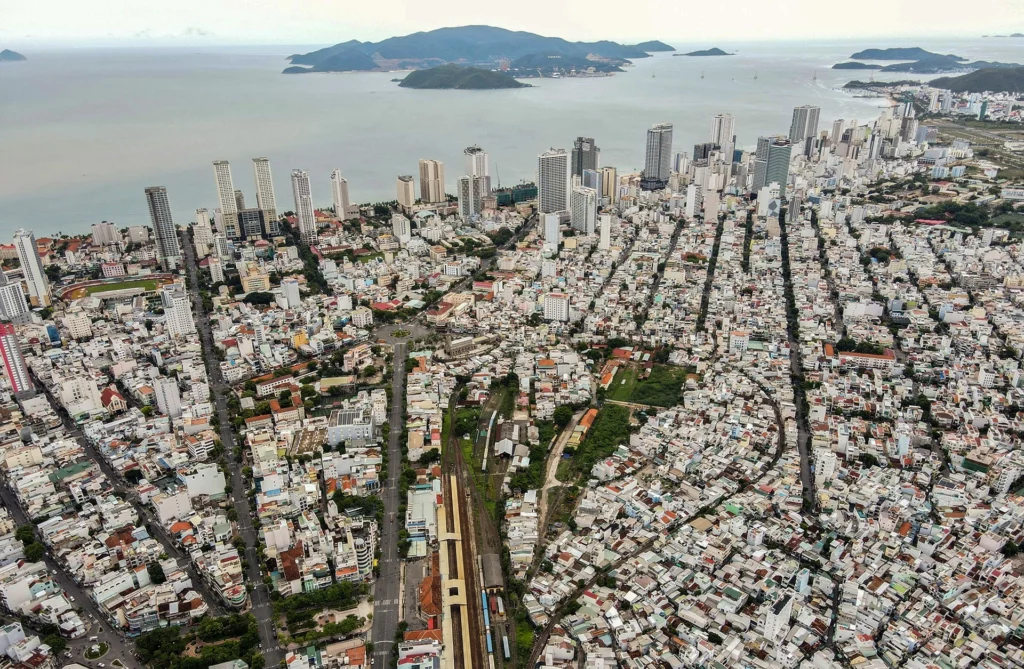Nha Trang, one of the most famous beach tourist destinations in Vietnam, not only attracts tourists by its cool blue beaches but also by its rich cultural heritage. Among them, Nha Trang Station is a destination not to be missed, both a stopover station and a part of the history of this beautiful coastal city. Nha Trang Station was inaugurated on September 2, 1936, coinciding with the National Day holiday. Gas is now nearly 90 years old.
Nha Trang Station is not only a stop on the North-South railway but also a valuable historical heritage of the coastal city of Nha Trang, Khanh Hoa. With a history dating back to the French colonial period, the station has become an inseparable part of the flow of time and culture here. Built in the early 20th century during the French colonial period, the station was originally a small stop on the journey connecting Hanoi and Saigon.
Currently, Nha Trang Station not only welcomes thousands of passengers every day but is also a tourist attraction, where visitors can feel the intersection between past and present, between tradition and modernity. The station has become a symbol not only of Nha Trang but also of the entire Central Coast region, contributing to promoting Vietnam's image and culture to the world.

Nha Trang Station has a beautiful location
Located right in the city center, only about 400 meters from the Mountain Church, Nha Trang Station is not only convenient for transportation but also easily connected to famous tourist attractions. This location makes the station an ideal starting point to explore the city and its beautiful beaches.
Historical Architecture
Having gone through many ups and downs of the country, Nha Trang Station exudes the characteristics of architecture from the French colonial period. This architecture is not only a testament to the heroic past but also the pride of the people of Phu Khanh. Today, the station still retains this historical beauty, becoming an unmistakable symbol of Nha Trang.
As one of the most important train stations on Vietnam's North - South railway from the first days of Vietnam railways to the present, Nha Trang Station is now a place where trains stop but also becomes a place to stop. become an indispensable part of the city's cultural and traffic life.

Nha Trang train tracks are designed with light bulb loops - trains enter and exit the same way. This is the only unique station design in the country (Other gas stations are simply 1 stop/station and the train will pass through; or Da Nang Gas also only has 1 common entrance with the exit).
Connect With Attractions
From Nha Trang railway Station, visitors can easily and conveniently travel to attractions in Nha Trang city. The station becomes the starting point for many journeys of discovery from beautiful beaches to unique historical and cultural relics of the city.
Arrive Nha Trang Mountain Church : 0.5 km
Go to the Institute Nha Trang Oceanography Institute: 6.0 km
Arrive at VinPearl port, Tam island: 7 km
To Nha Trang Tourist Pier: 7.5 km
Arrive Hon Chong : 4.0 km
Arrive Ponagar tower: 3.2 km
Arrive Thap Ba Mud Toothpick: : 5.6 km
To Dam Market: 1.6 km
Arrive Long Son Pagoda : 0.5 km
Change the ending
Not only is it a transportation project, Nha Trang Station is also an important part of the history and culture of Khanh Hoa. From its historical architecture to its prime location and functionality, the station has become a symbol not only of Nha Trang but also of the entire Central Coast region. Coming to Nha Trang Station, visitors not only begin the journey to explore a vibrant coastal city but also have the opportunity to experience and feel a rich history of Vietnam.



